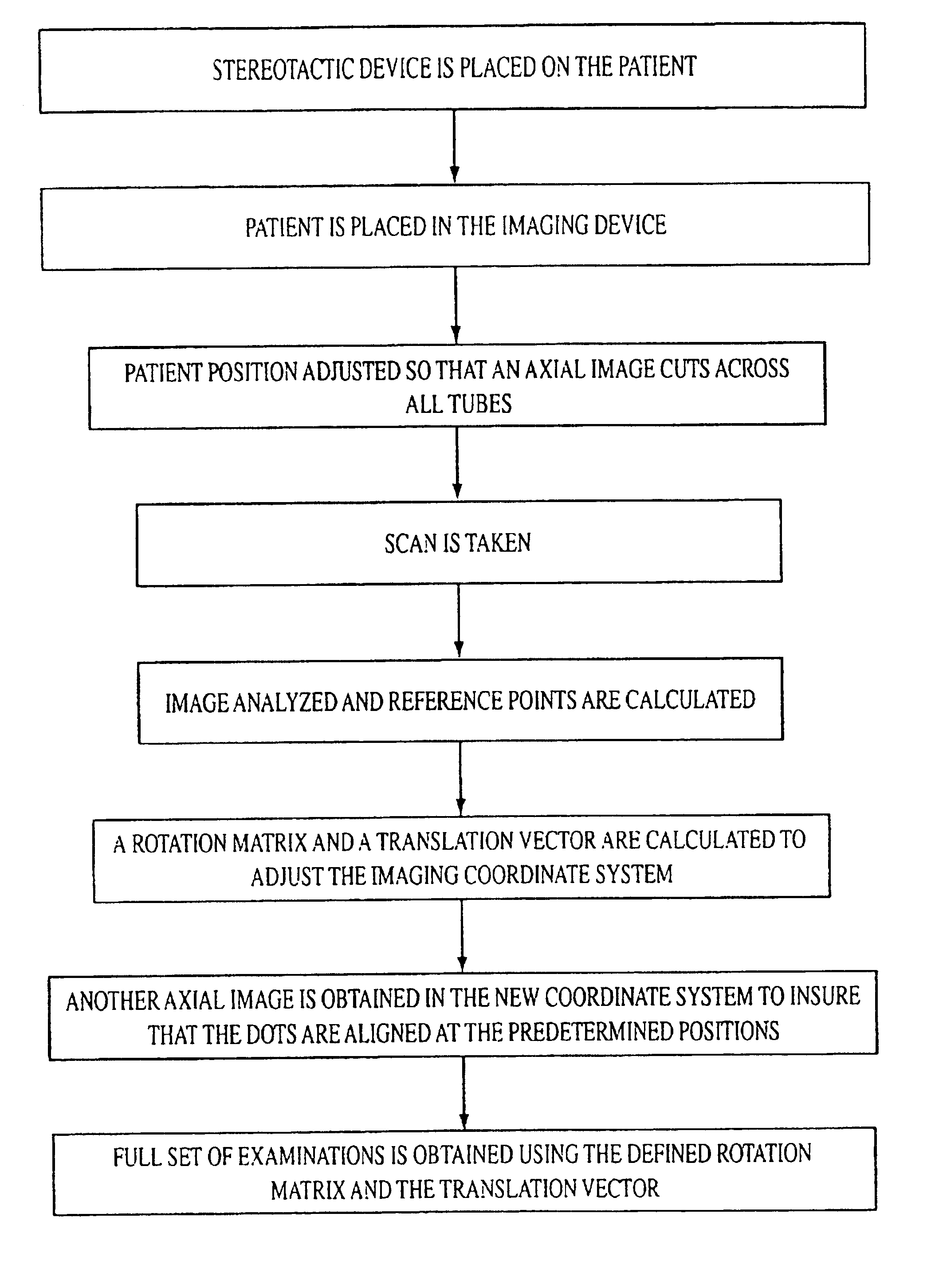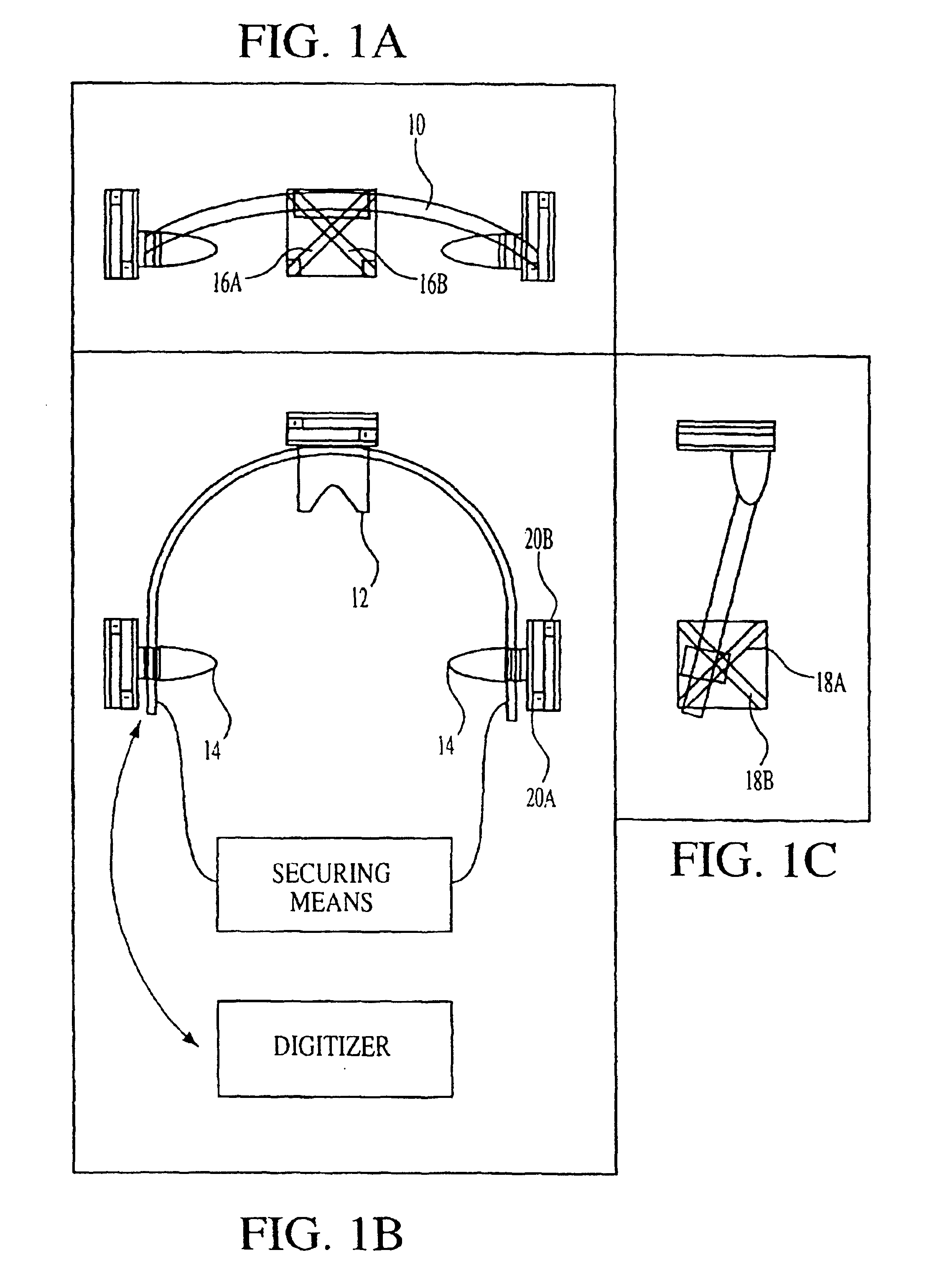Versatile stereotactic device and methods of use
a stereotactic device and stereotactic technology, applied in the field of stereotactic devices, can solve the problems of poor image resolution in the scan slice direction (i.e., z-direction), heavy existing devices, and inability to perform "routine" office examinations, etc., and achieve accurate and reproducible results. , the effect of convenient us
- Summary
- Abstract
- Description
- Claims
- Application Information
AI Technical Summary
Benefits of technology
Problems solved by technology
Method used
Image
Examples
Embodiment Construction
The illustrative device and method permit the alignment of routine scans to a pre-defined personal coordinate system. Once this alignment is performed, the location, orientation and size of, e.g., lesions can be reproducibly and precisely determined. It thus becomes possible to compare locations and size from different examinations at different times and sites using different machines for a given modality. It is further possible using the stereotactic device of the invention to provide for imaging scans that can be aligned directly and compared across different imaging modalities.
To accomplish further the objectives of the present invention, the following detailed description is provided which is directed to the lightweight frame, including non-invasive affixing means, localizing means and reference elements for defining a personal coordinate system and a computational procedure for the manipulation and / or alignment of coordinate systems to permit imaging scans to be taken at differ...
PUM
 Login to View More
Login to View More Abstract
Description
Claims
Application Information
 Login to View More
Login to View More - R&D
- Intellectual Property
- Life Sciences
- Materials
- Tech Scout
- Unparalleled Data Quality
- Higher Quality Content
- 60% Fewer Hallucinations
Browse by: Latest US Patents, China's latest patents, Technical Efficacy Thesaurus, Application Domain, Technology Topic, Popular Technical Reports.
© 2025 PatSnap. All rights reserved.Legal|Privacy policy|Modern Slavery Act Transparency Statement|Sitemap|About US| Contact US: help@patsnap.com



